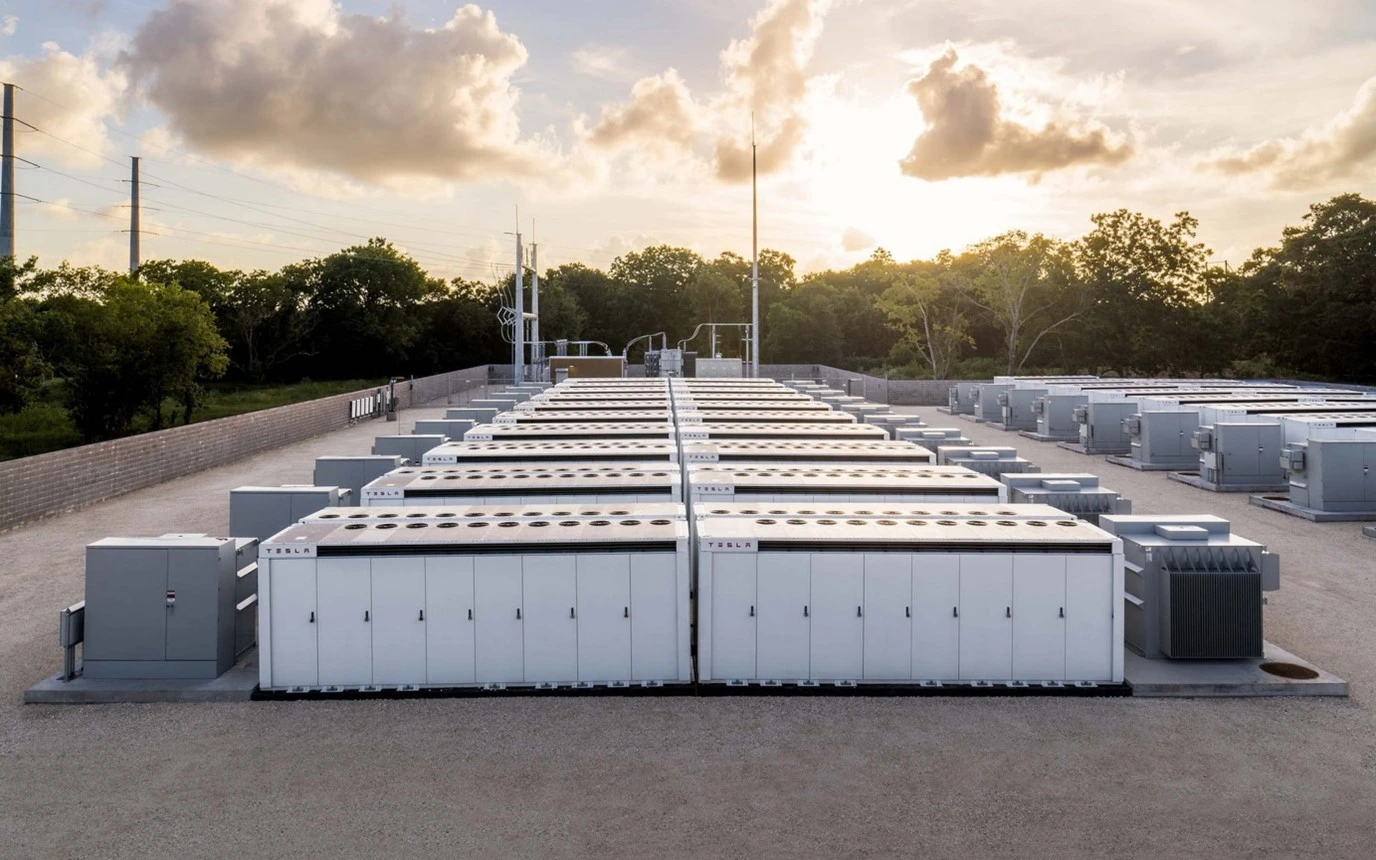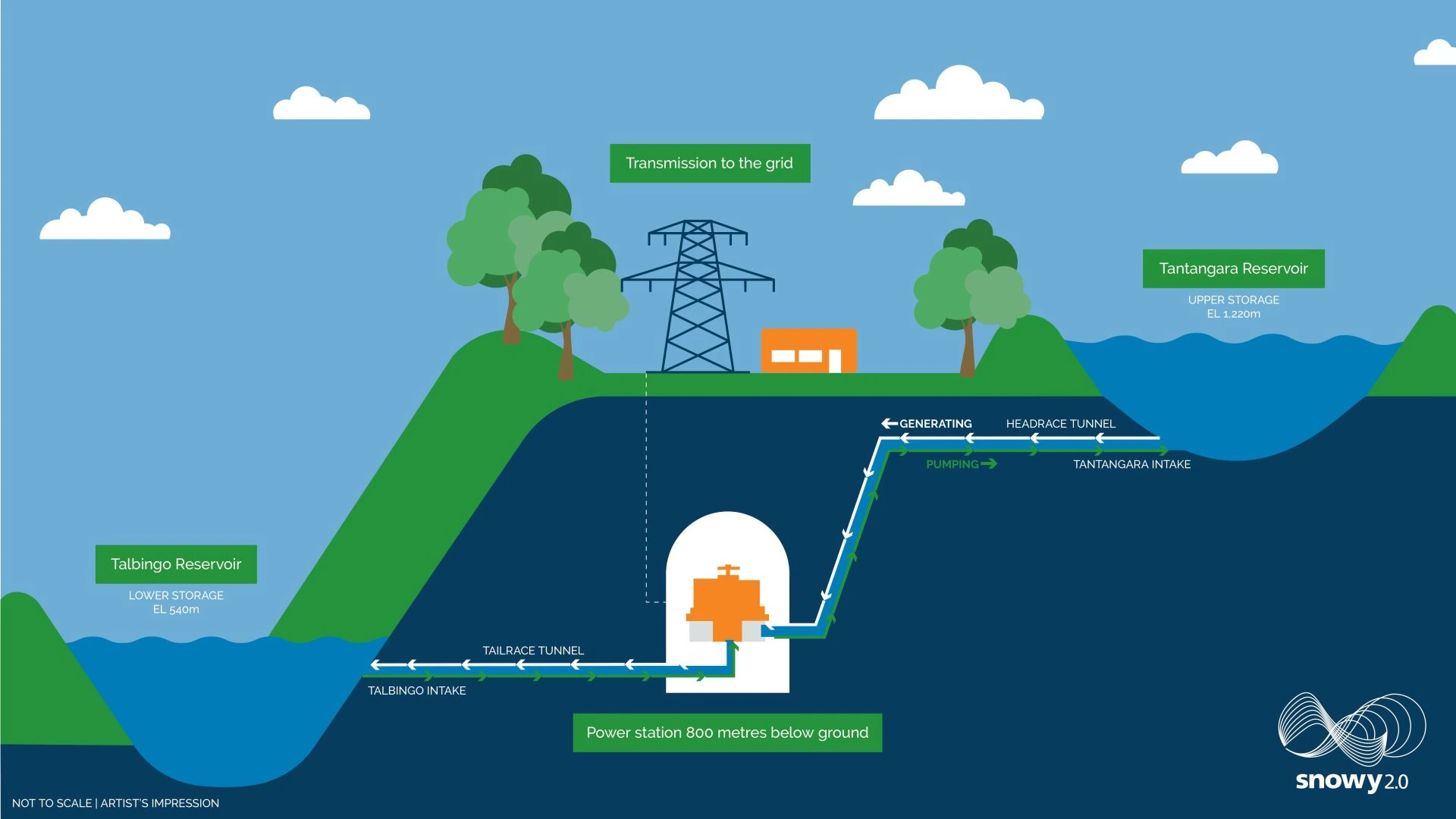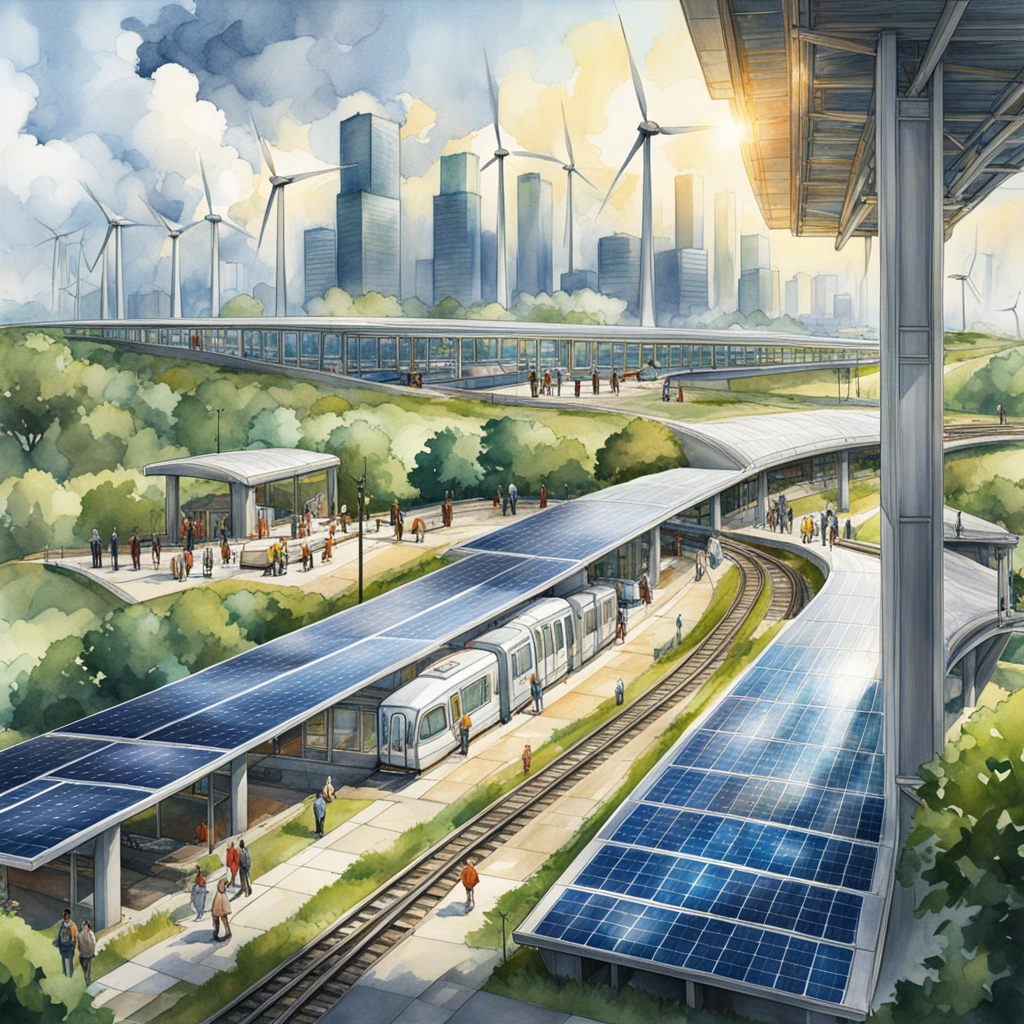 Charge Forward: Developments in Storing Renewable Energy
Charge Forward: Developments in Storing Renewable Energy
The quest for sustainable and clean energy sources has become a global imperative. As we pivot away from fossil fuels and embrace renewable energy, efficient energy storage systems are becoming increasingly critical. In this blog, we explore the latest advancements in energy storage technologies that are bolstering the shift to renewable energy.
The Vital Role of Energy Storage
Energy storage is a crucial component in the renewable energy ecosystem. It addresses one of the most significant challenges of renewable sources: their intermittent nature. Solar and wind energy are not continuously available – the sun sets, and the wind does not always blow. Energy storage systems bridge this gap by storing excess energy generated during peak production times and releasing it when the demand is high, ensuring a steady and reliable energy supply. In this blog we explore the following energy storage systems:
- Lithium-Ion Batteries
- Alternative Battery Energy Storage Systems
- Pumped Hydro Storage
- Innovative Gravity Energy Storage Systems
- Thermal Energy Storage Systems
Lithium-Ion Batteries: The Current Battery Energy Storage System (BESS) Leader
Incremental Improvements and Cost Reductions

Lithium-ion batteries, the same technology that powers our smartphones and laptops, currently lead the market in energy storage solutions. Over the years, incremental improvements in lithium-ion technology have led to better energy densities, longer life spans, and most importantly, significant cost reductions. Economies of scale, driven by the electric vehicle industry, have contributed to making lithium-ion batteries an economically viable option for large-scale energy storage.
Understanding the Limits: Technology Challenges of Lithium-Ion Batteries
Despite the advances in lithium-ion technology, they are not without their limitations. One significant challenge lies in the chemistry itself; lithium-ion batteries are prone to degradation over time and with use. Additionally, lithium-ion batteries have a high self-discharge rate compared to other types of batteries, which can be problematic in grid applications where energy needs to be stored for extended periods.
Moreover, lithium-ion batteries require sophisticated management systems to maintain performance and safety. These Battery Management Systems (BMS) add complexity and cost to the energy storage solution. They are crucial for monitoring cell temperature, voltage, and state of charge to prevent overcharging, deep discharging, and overheating, which can lead to thermal runaway and potential battery failure.
Environmental Impacts: The Hidden Cost of Lithium-Ion Batteries
The environmental implications of large-scale lithium-ion battery use are multifaceted. The extraction of lithium, cobalt, and other rare minerals used in these batteries often involves environmentally damaging practices, including extensive water use and pollution, which can have dire effects on local ecosystems and communities. The mining process also contributes to greenhouse gas emissions, counteracting the environmental benefits of renewable energy storage.
Disposal presents another environmental challenge. Lithium-ion batteries contain hazardous materials that can leach into the environment if not properly disposed of, posing risks to soil and water sources. While recycling solutions are improving, the current global infrastructure for lithium-ion battery recycling is insufficient to manage the volume that will be generated as these batteries reach the end of their useful life. This creates an impending need to invest in and improve recycling technologies and systems to ensure that the environmental footprint of lithium-ion batteries is minimised as their use continues to expand.
Beyond Lithium: Alternative Battery Energy Storage Systems (BESS)
Flow Batteries: Durability for the Long Haul
Flow batteries stand as a promising alternative to lithium-ion systems, particularly for large-scale energy storage applications. These batteries store energy in liquid electrolyte solutions, which flow through an electrochemical cell during charging and discharging cycles.
Flow batteries present a unique opportunity for large-scale energy storage applications. Unlike conventional batteries, where the energy capacity is limited by the electrode size, flow batteries can store more energy simply by increasing the volume of the electrolytes. Flow batteries offer other advantages, including longer cycle lives and quicker response times. For instance, vanadium redox flow batteries (VRFBs) maintain capacity over thousands of cycles, making them an attractive choice for long-term storage needs.
The development window for flow batteries is progressing, with pilot projects around the world demonstrating their potential. Full-scale deployment in the electrical grid is likely to occur within the next decade as the technology matures and costs continue to decline.
Solid-State Batteries: The Next Frontier
Solid-state batteries are at the forefront of energy storage innovation. By replacing the liquid electrolyte with a solid one, these batteries promise higher energy densities, improved safety, and a potential leap in performance over traditional lithium-ion batteries. Researchers are working tirelessly to overcome current limitations, such as manufacturing costs and material brittleness, to bring solid-state batteries from the lab to the market.
With development ongoing, solid-state batteries are not expected to be ready for widespread adoption before 2030. The automotive industry may be the first to benefit from this technology, with implications for the grid storage market to follow as the technology becomes more cost-effective and scalable.
Harnessing the Power of Gravity
Mechanical Solutions with Pumped-Storage Hydroelectricity
Pumped-storage hydroelectricity is a time-tested technology that uses gravity to store energy. Water is pumped to a higher elevation during periods of low energy demand and then released to flow downhill through turbines during peak demand, generating electricity. This type of energy storage is highly efficient and can be rapidly deployed to balance grid demands. Here in Australia, we currently have the have the Snow Hydro 2.0 project under construction. Once completed in 2028 it will provide up to 2,200MW of dispatchable power and 350,000MWh of energy storage.

The Geography Issue with Pumped-Storage Hydroelectricity
Pumped-storage hydroelectricity, while efficient, is not without its geographical constraints. The technology requires specific topographical features to be feasible, including a substantial height difference between two bodies of water. Ideal locations are found in mountainous regions or areas with natural valleys that can be cost-effectively converted into upper and lower reservoirs.
The availability of water sources and environmental considerations also play a pivotal role in site selection. Protected areas, regions with scarce water supply, or places with ecological sensitivity may not be suitable for pumped-storage projects. Additionally, proximity to energy markets is crucial to reduce transmission losses and infrastructure costs. These geographical constraints mean that not all regions can benefit from this storage solution, thereby limiting its use to certain areas around the world.
The Economic Equation of Pumped-Storage Hydroelectricity
The cost of implementing pumped-storage hydroelectricity is another crucial factor to consider. The initial investment includes the construction of reservoirs, dams, tunnels, and powerhouses, alongside the necessary electrical infrastructure to connect to the power grid. These capital costs can be quite substantial, running into billions of dollars for large-scale plants. While the operational costs are relatively low once the system is up and running, the initial outlay can be a hurdle, especially in regions with limited financial resources or where cheaper alternatives are available. Moreover, the long lead time from planning to operational status can be a deterrent in a rapidly evolving energy market. For example, the Snowy Hydro 2.0 project is has an estimated final cost of $12Billion with an 8-year construction program.
Innovation with Gravity Energy Storage Systems (GESS)

Emerging gravity-based energy storage systems use weights or other methods to store potential gravitational energy. When there is surplus energy, the system uses this energy to elevate weights. Then, during times of high demand or when renewable sources are not generating electricity, the weight is lowered, and the potential energy is converted back into electricity through generators.
Companies are experimenting with various concepts, such as lifting massive blocks or using mine shafts to raise and lower weights. These innovative systems aim to provide long-duration storage using simple, durable, and often recycled materials.
Energy Vault® are a leader in this space, offering energy storage solutions ranging from 2hrs to multi-days. Energy Vault is currently commissioning a 25MW/100MWh GESS at Rudong, outside of Shanghai, China. This is the world’s first commercial-scale non-pumped hydro GESS. With Energy Vault currently deploying a further 6 commercial-scale GESS installations in China alone.
Thermal Energy Storage: Heat as a Storage Medium
Thermal energy storage (TES) is achieved with a wide range of different methods and technologies, each having unique properties, applications, and challenges. These technologies include:
- Sensible heat storage systems, which utilize the heat capacity of materials like water or rocks, are the most prevalent due to their simplicity and cost-effectiveness.
- Latent heat storage systems use Phase Change Materials (PCMs) to absorb or release large amounts of energy during phase transitions, making them highly effective for temperature regulation.
- Cryogenic energy storage uses excess grid energy to compress and cool air into a liquid. liquid air to storage energy. When then liquid is allowed to boil at ambient atmospheric temperature the expansion of liquid into a gas is used to drive turbines and generate electricity.
- Thermochemical storage, although less common, provides an innovative approach by storing energy through chemical reactions, which can be reversed to release heat with minimal losses.
Thermal Energy Storage: Scalability and Integration Challenges
While thermal energy storage systems show promise, scaling them up presents unique challenges. Firstly, the materials and infrastructure required to handle high-temperature thermal storage are specialized and costly. Also, TES systems generally have lower efficiency and energy density compared to chemical batteries, necessitating larger physical footprints for equivalent energy storage. Additionally, integrating these systems into existing power grids requires careful planning to ensure that they can be efficiently charged and discharged. This means that TES systems must be designed together with renewable energy projects, to optimize their efficiency and value to the grid.
Conclusion
The continuing advancements in energy storage technologies are pivotal in the transition to a renewable energy future. Accelerating integration of these advanced energy storage systems into the energy grid is not just a technological challenge but also a regulatory and economic one. Smart grid technology, policy frameworks, and innovative business models are all vital to the successful adoption of energy storage solutions. Investment in these technologies and their integration into our energy infrastructure, is paving the way for a future where renewable energy is not only possible but practical and pervasive. The energy storage revolution is here, and it is powering a brighter, more sustainable future for all.
 Charge Forward: Developments in Storing Renewable Energy
Charge Forward: Developments in Storing Renewable Energy

